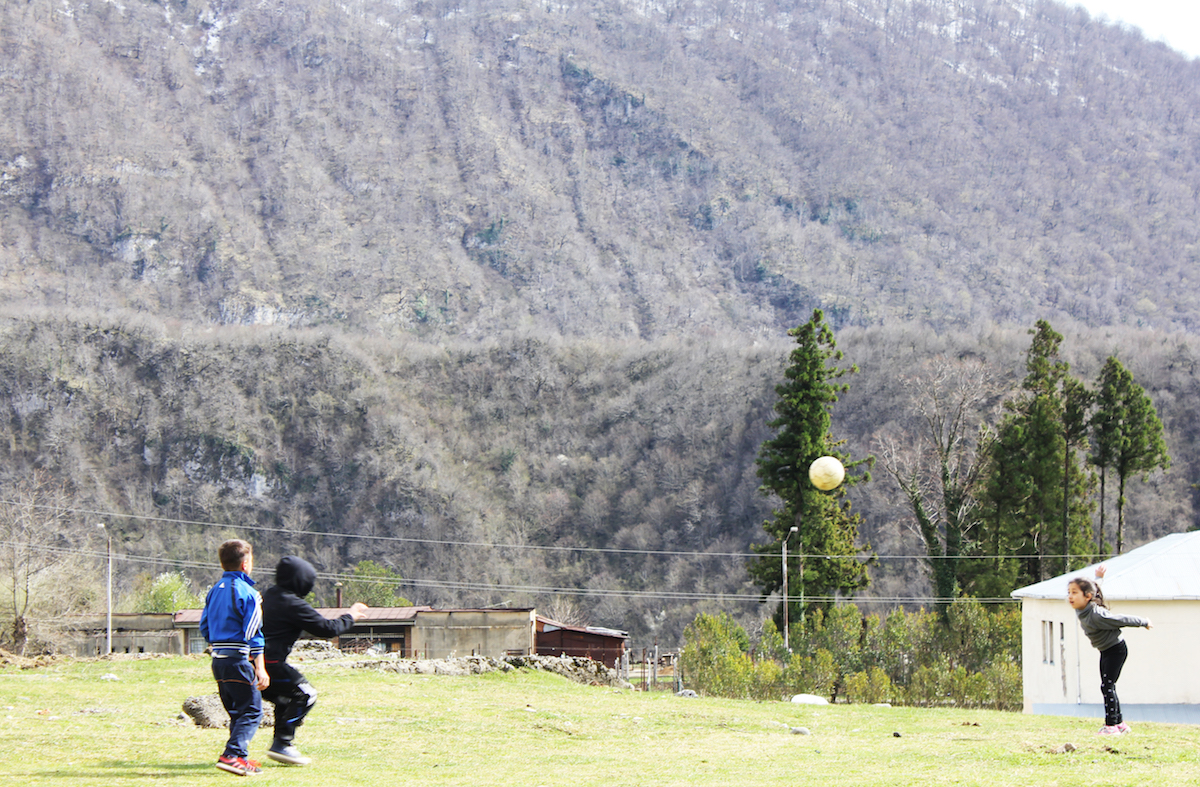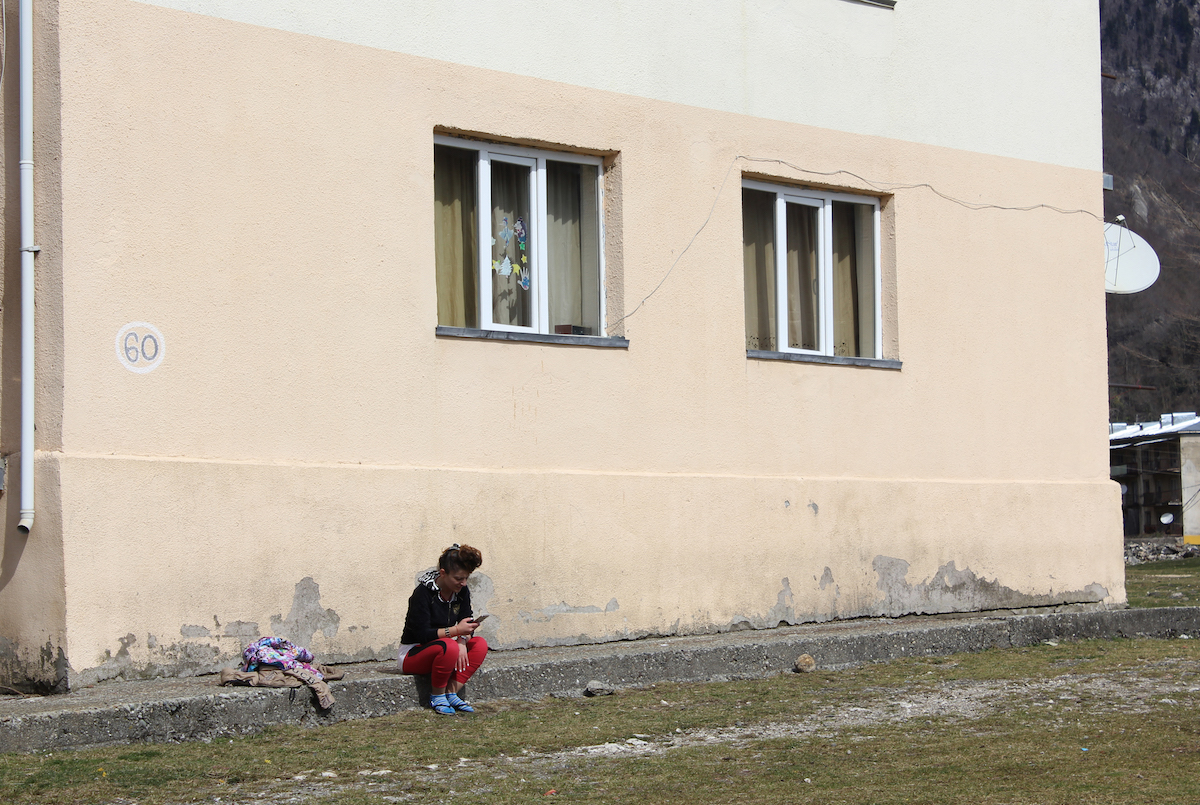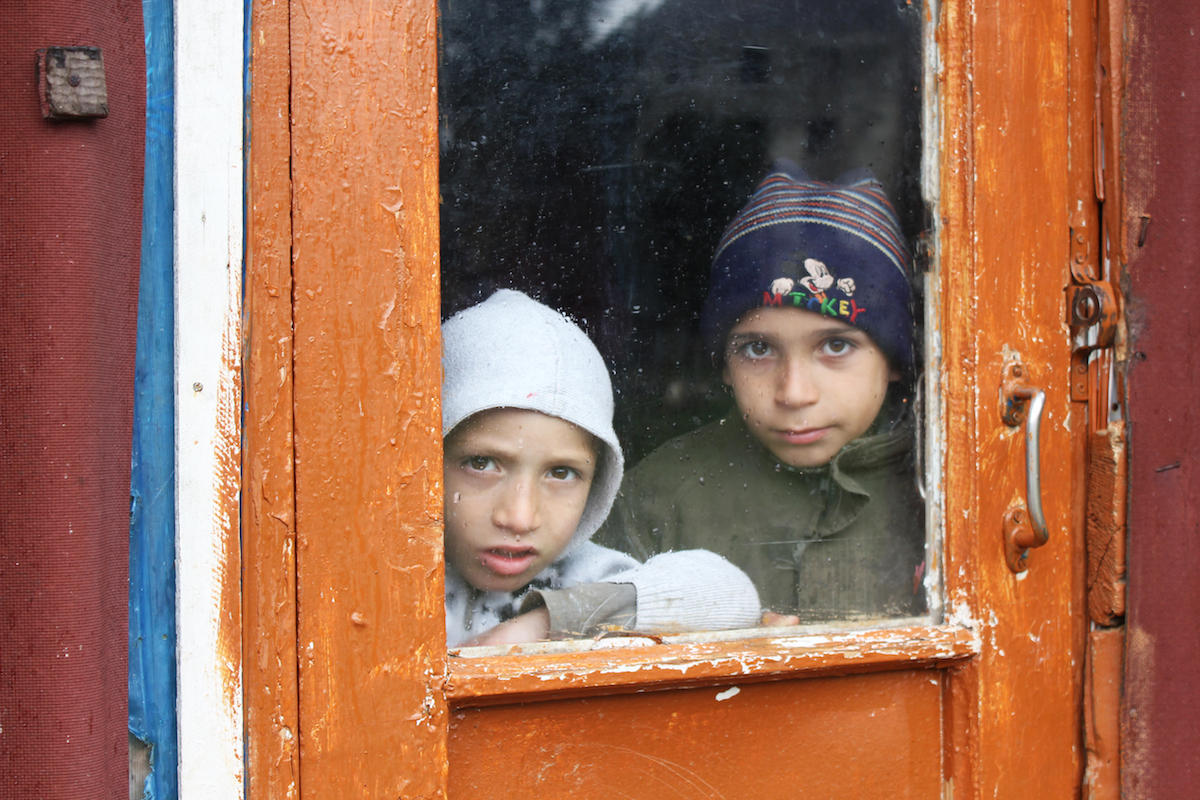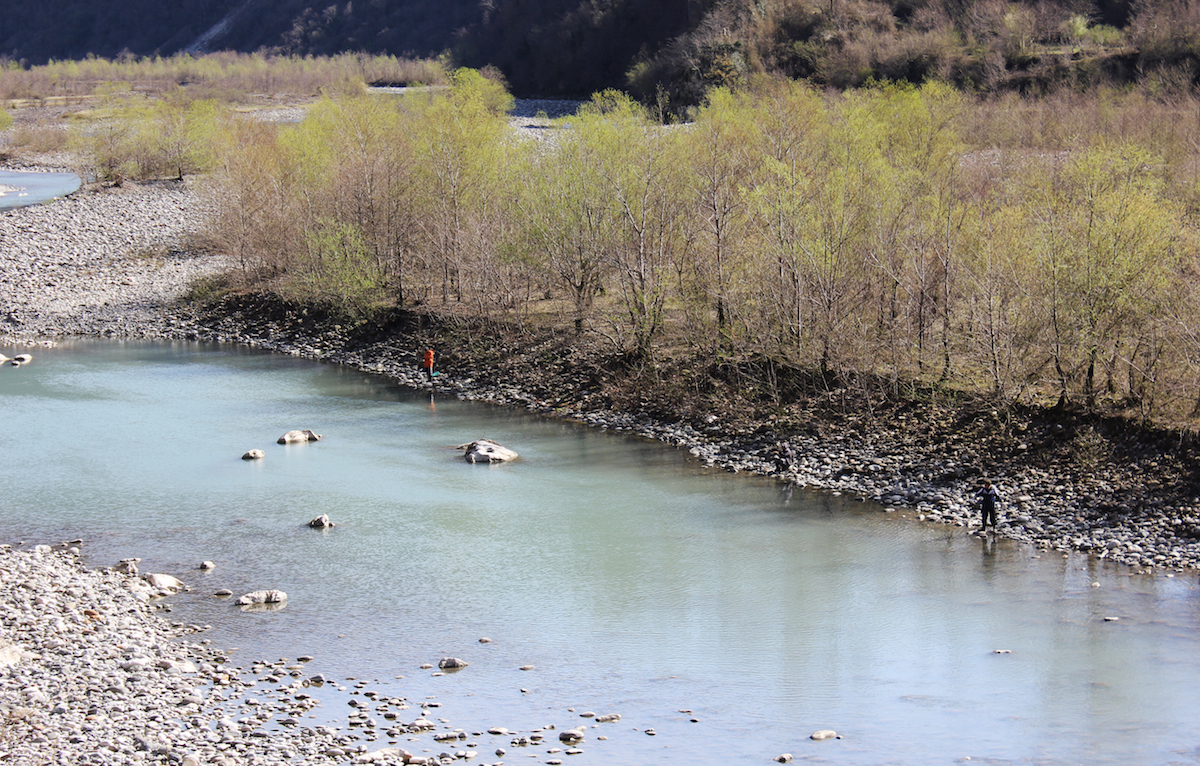An odd location for twice-displaced IDPs in Georgia
In 2010-2011, the Georgian government decided to evict IDP’s from state-owned buildings (daycare facilities, culture centers and hotels). The IDP’s had been residing there since 1990, following the Georgian-Abkhazian conflict.
It was decided to resettle the thousands of IDPs in various regions across the country, which ended up being quite a painful process – people were forcefully displaced from the capital to rural areas; what they oftentimes found there was nothing but the confines of four walls – neither jobs, nor infrastructure nor fertile land. Potskho Etseri was one of the places to accommodate the resettled IDPs. 170 families were relocated there 7 years ago. However, when David Kanchashvili and David Pipia, JAMnews correspondents, travelled to Potskho Etseri to meet with these IDPs, they found almost no one there.
‘We stopped the car after a long journey. There was a lengthy nameless street ahead. A couple of Soviet-era low-rise buildings lined up on the left side – though, the roofless and windowless debris could hardly be referred to as ‘buildings’.
Some rain-washed campaign posters, hanging on the facade of a long, one-storey house, caught our eye. The inscriptions on some of them read: Levan Kardava – #5, Giorgi Margvelashvili (the incumbent President of Georgia), Besik Partsvania – #41 (5 and 41 were the ballot paper numbers for the major opposition United National Movement and the ruling Georgian Dream party in 2012).

There were a couple of other buildings on the right. Judging by their facades, they were repainted a few years ago. However, there were no visible signs of life there either.
There were neither lights switched on in any of those houses, nor any clothes drying on the ropes outside. Not a single car parked, no people, no stray dogs. There wasn’t even any garbage that might have indicated human life. No sound could be heard there either.
Dato and I continued our way on foot. Dato was carrying a tripod and I was holding a camera.

Having walked for a few minutes, we notice a 6-7 year-old boy hiding around the corner. He was wearing over-the-knee rubber boots, dark faded pants and a long sleeve T-shirt. His head was shaved. He looked at us with his big, surprised eyes. His facial expression resembled that of a famous ‘Walking Dead’ TV series character, who came across another living human being in a ruined city street, not knowing whether to rejoice or be afraid of him.’
-“What’s your name?” I asked.
– “Sandro” he said, smiling.
– “What are you doing here?”
– “Nothing.”
– “Are you going somewhere?”
– “Nowhere.”
– “And where are the people?” Dato asked curiously.
– “I don’t know.”
– “Is there anything here? Either a police station, an outpatient clinic or a church?”
– “No.”
– “And what about a drugstore?”
– “No.”
– “Is there at least something?” Dato kept asking.
– “Only the blocks of flats.”
– “And are there any people living there?”
– “A guy is living in the building over there. And there are a few people residing in that one,” Sandro said, pointing his finger.
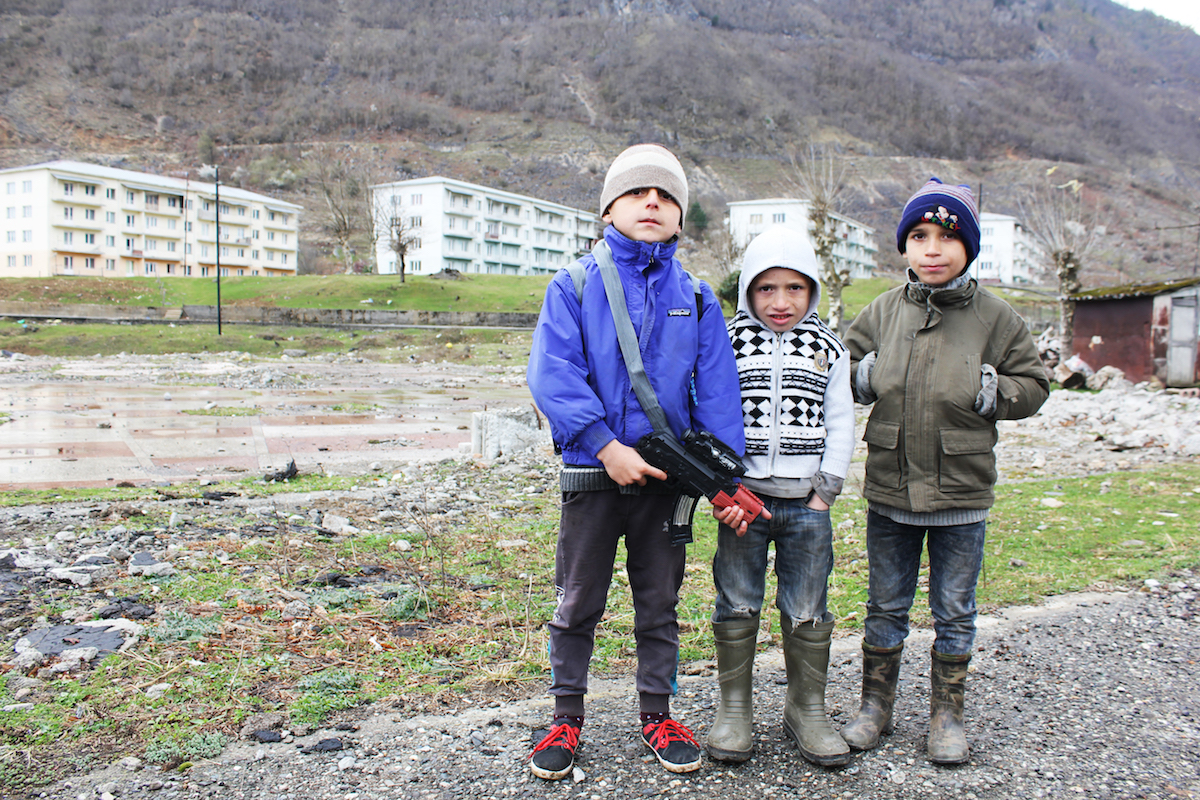
Where are the people?
Potskho Etseri is located almost within the conflict area, in the vicinity of the administrative border with Abkhazia.
There is Enguri HPP, Georgia’s largest hydro-power plant, located a few kilometers away from Potskho Etseri. Enguri HPP builders used to live in Potskho Etseri during Soviet times. This settlement was built specially for them.
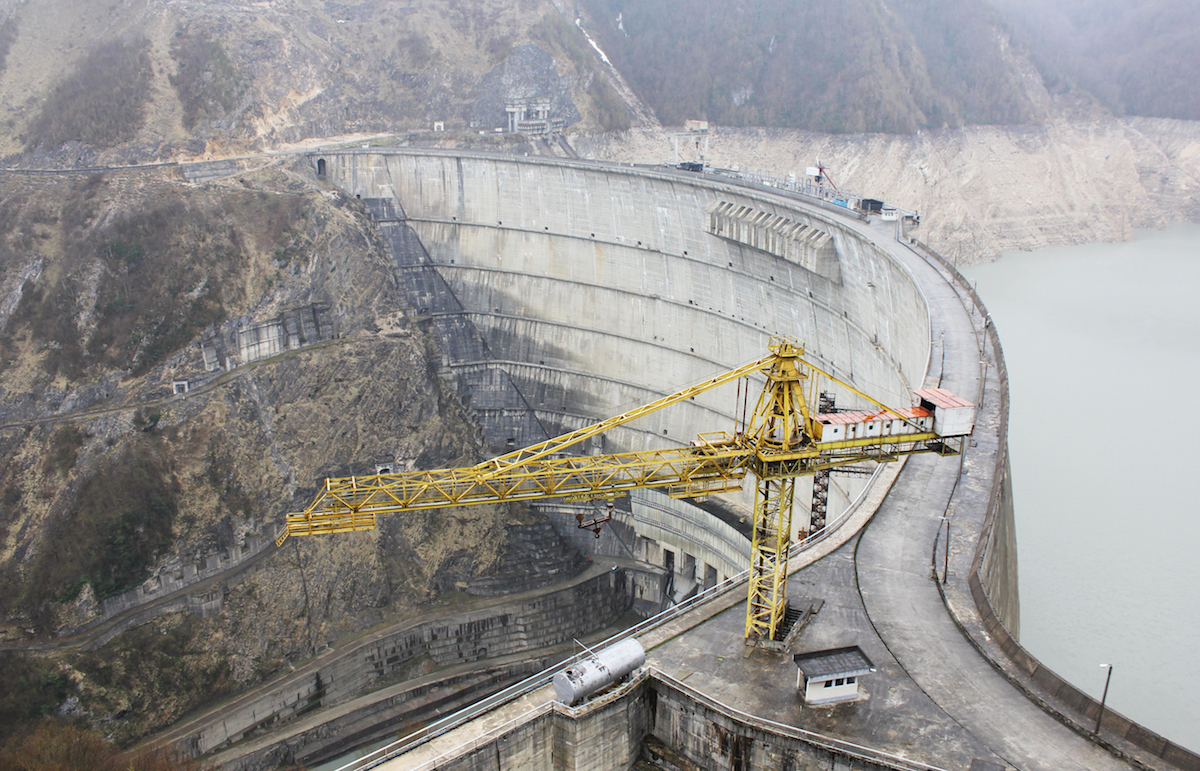
The first flow of IDPs settled down in this area after the Georgian-Abkhazian conflict in 1992. Those IDPs still live on the other side of the settlement’s nameless street.
More IDPs came to the settlement in 2010-2011. It’s a period when the authorities in Tbilisi started mass eviction of IDPs from state-owned buildings, knowing they have occupied them since the early ‘90s.
Most of the aforesaid buildings were located in the city’s central districts and they were attractive to investors. Therefore, the authorities decided to vacate those buildings and resettle the IDPs in various regions across the country.
That’s how the new IDPs, this time displaced from the capital’s central districts, first appeared in Potskho Etseri.
It was a painful and dramatic process. People were forcefully evicted from the buildings. In fact, they were internally displaced for the second time. Many of them lost not only housing, but also their jobs in the capital.
According to Tsalenjikha Municipality Gamgebeli (the head of local administration), a total of 171 families were resettled in Potskho Etseri from Tbilisi in 2010-2011. However, only a few of them still live there.
Only 8 families officially refused the government-offered housing, while the rest of the families locked the apartments and either moved to Zugdidi or returned to Tbilisi in search of jobs and means of subsistence.
Twice-displaced IDPs
In 2010-2011, the Georgian authorities decided that IDPs’ life in the capital no longer matched a developed city landscape. So, the IDPs were resettled in more remote areas, so as to keep them out of sight.
Sergo Bokuchava was first displaced in the beginning of the war in Abkhazia. When he left his house in Abkhazia, he knew it was the war that turned him into an IDP. He was displaced for the second time, when the authorities decided to make better use of the building where his family resided together with other IDPs. The residents were forcefully evicted from the building by the police.
All of that happened in front of TV cameras, in full view of international monitors and representatives of the Ombudsman’s office. There was no one to turn for help to. Sergo was lucky enough not to be arrested and fined for resistance to the police.
“When we were forced out from Abkhazia, we knew where we were going. Whereas when we were ousted from Tbilisi, we were unaware where they would take us,” said Sergo Bokuchava, 45.
He lives in Potskho Etseri dormitory together with his mother, and is unemployed. Staying in bed is the only way he could warm up in winter. He has a wood-burning stove, but there is no firewood. The Forestry Department issues tree felling permits only for the areas where it’s too expensive to cut trees and transport them home.
There are 32 apartments in a 4-storey building. Initially, the IDPs were resettled in all of them. However, only 4 families stay there now. The rest have left the settlement in search of jobs.
The land of growing stones
If you walk along the road, you will find a couple of small, fenced-off land plots in the upper part of the settlement. One of them is cultivated by a 60-year-old woman. As she told us, she could hardly handle 80 square meters.
“I have removed stones loaded on 3 trucks from here. But new stones appear each day. Do they grow here? I’m sick and tired of collecting and throwing them away. I’ve been doing that for 12 years. And the situation is the same in other places throughout the settlement. This land is of poor quality, it’s full of stones. Therefore, many people can’t stand living here,” she said.
When I asked her name, she smiled and said that it didn’t actually matter, suggesting that I should instead write ‘a miserable person’.
Her husband, who had been employed at Enguri HPP, died 15 years ago. She regretted that she failed to find any job: ‘I couldn’t find even broomstick work. I’ve been receiving pension for 6 months already.’
She grows peppers and tomatoes and she is unaware what the crop will be like this year.
“I was denied social allowances. When a social service agent came to my place, he said I lived pretty well and I wasn’t eligible for social benefits. My house is clean and tidy, I’m not sinking in dirt, so what? I’ve got a wardrobe, a piano and some mattresses, but why do I need all that? He said, I’d better sell those things and I told him: ‘Go and sell your house and your family, too.’ ”
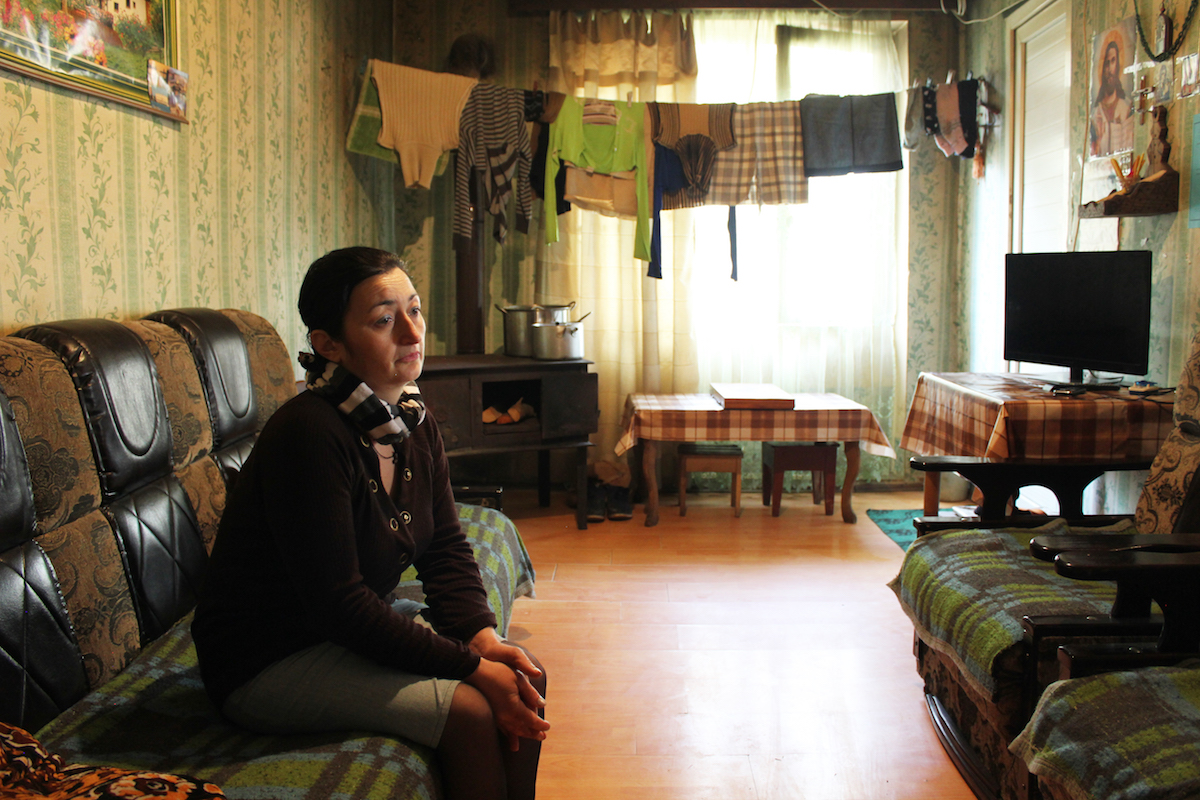
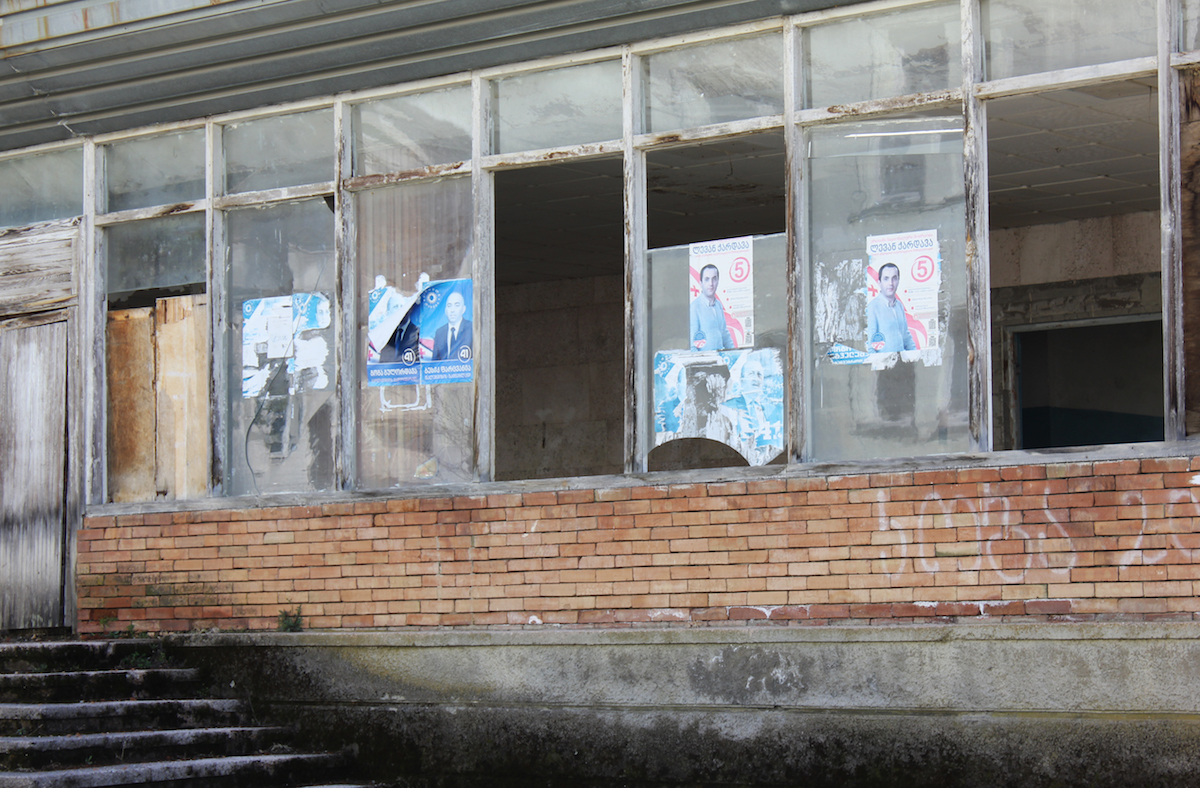
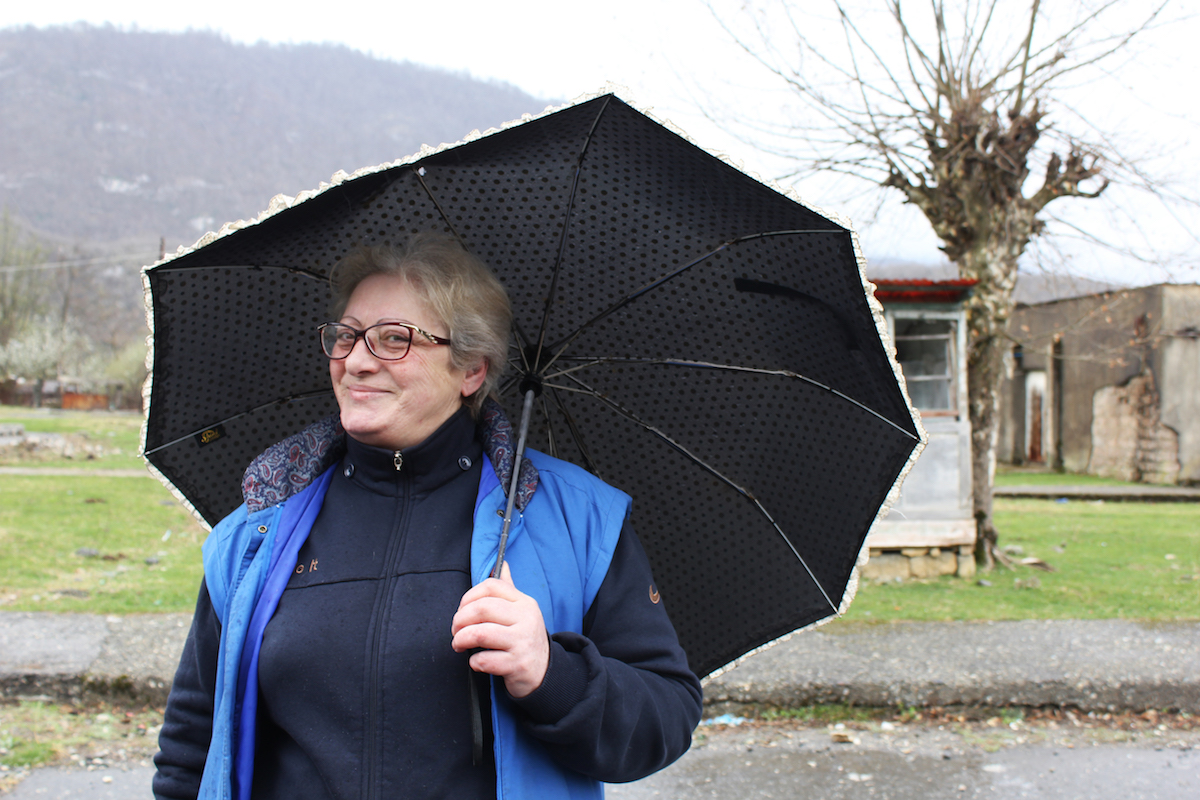
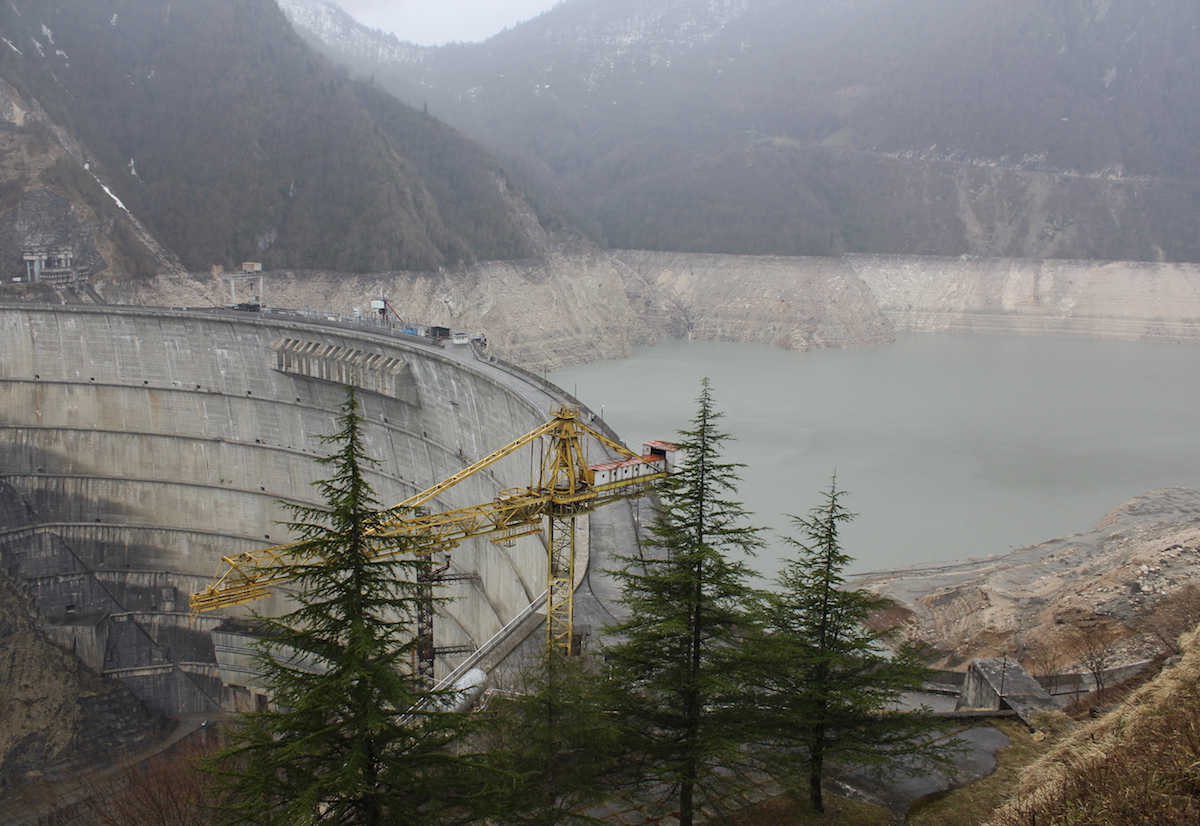
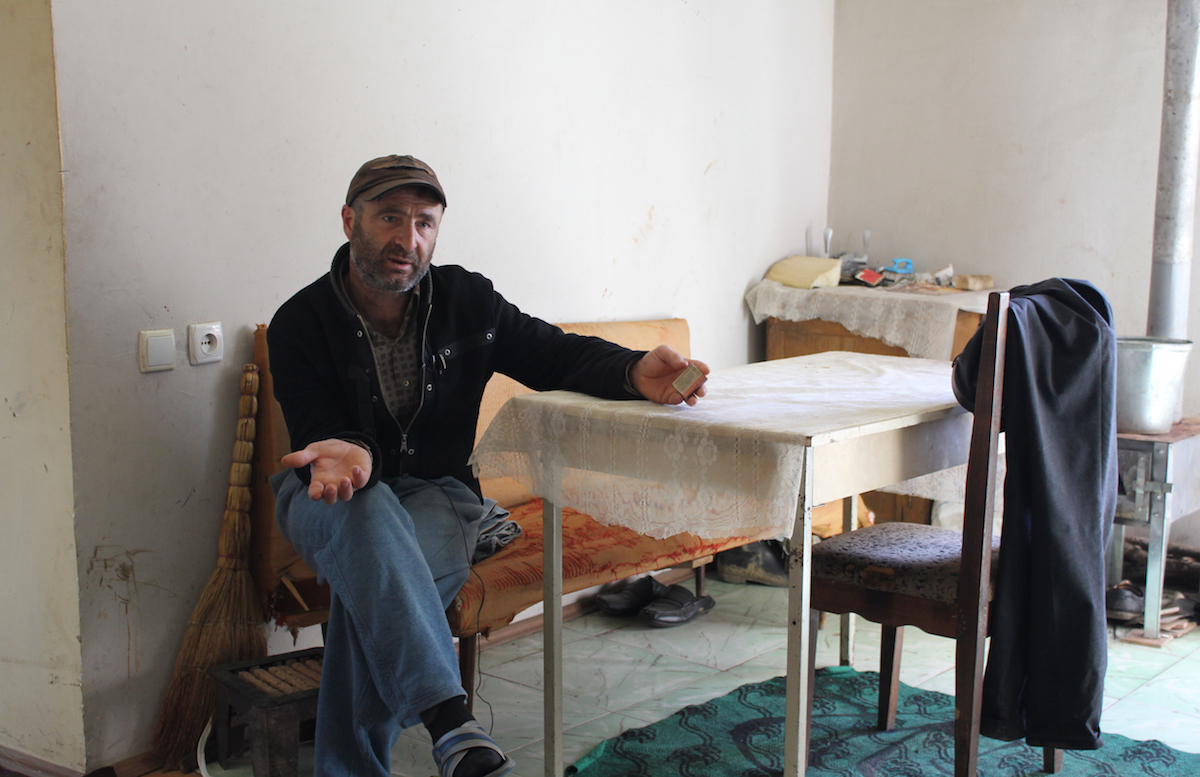
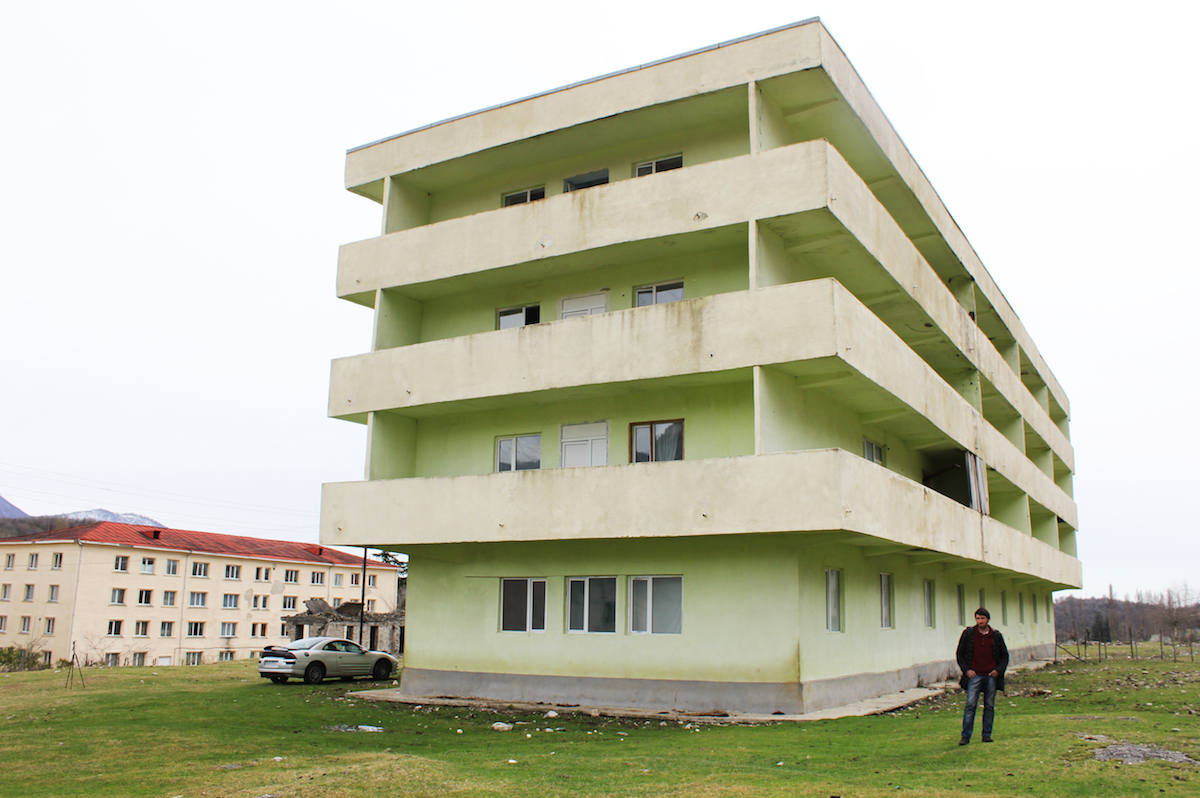
It takes 40 minutes to get to a drugstore
There are several public institutions in Potskho Etseri. There is a school (up to the 9th grade), a daycare facility and an old hotel that was once constructed for Enguri HPP visitors.
It’s almost impossible to find any job here.
Locals say, they have to travel several kilometers to Jvari village to get medical aid, medicines and other essentials.
A bus that runs to Jvari once a day is the only transport that delivers the upper-grade students back and forth.
As for the rest of the residents, they have to cover several kilometers on foot. It’s hard to walk there due to the challenging terrain. At first one should follow down a crooked serpentine path, then cross the bridge and surmount a lengthy ascend. Those are deserted areas and, as locals claim, some wild animals could be commonly found here. It takes about 40 minutes to get to Jvari on foot.

A minibus shuttles from here to Zugdidi thrice a week. However, the locals find it quite expensive – a travel fare amounts to GEL2,5 (about US$1).
There are 12 teachers and 30 students in the local school. When IDPs were resettled here from Tbilisi, the number of school students reached 70. However, later, as people started to leave the area, the number of students dropped again.
A guard opens the school in the morning. In winter, he goes around the classrooms and fires up the furnaces, so as to make it a little bit warmer before the children come to classes. It’s is usually frosty in Potskho Etseri in winter.
Although the settlement is located in the vicinity of Georgia’s largest HPP, the IDPs residing here don’t enjoy any electrical power allowances. The school doesn’t enjoy any benefits either. Otherwise, as the locals say, they would have warmed it up with electric heaters.
I saw a young guy sitting on the sidewalk outside one of the dormitories. He introduced himself as Nika Kurdiani. He is an IDP from Abkhazia. His family lived in Tbilisi until 2011. When they moved to Potskho Etseri, he was a schoolboy. He still remembers his Tbilisi school and his classmates, whom he hasn’t seen since that time. He completed 9th grade in Potskho Esteri. And now he is thinking about what to do next. He wants to continue his studies, but he doesn’t know yet where to study and how.
I wondered what he was doing all day long and how he spent his time. “I don’t do anything. I wake up, get out of bed and go outside. Sometimes a neighbor would call me and ask to help him with something,” he answered, smiling.
When asked about his future plans, he smiled again. “I don’t know, whether I’ll stay here or not. I don’t want to stay here, but I have no idea where to go.”
Reporters
The residents of this settlement are accustomed to reporters’ visits. They come here, look around the place, get surprised and ask the locals: ‘How do you live?’ How do you manage to survive?’ ‘Were you forcefully displaced from Tbilisi?’ ‘Can you say it on camera?’ Then they would tell a cameraman: ‘take ‘a close-up’, capture a ruined facade over there… They put some notes in their scratch pads and then they leave.
The locals smile: ‘How many times are we supposed to tell one and the same things either to the newspaper or TV reporters?’
‘What’s the point?’- they said. ‘Nobody cares about us anyway.’
We felt a little bit ashamed and promised to write and show all that, so that there might be someone who would pay attention to it. However, they no longer believe it. ‘We were right there, beside them, in Tbilisi. If they had wished to take care for us, they wouldn’t have ousted us here,” said Yuri Tserkvava.
He is also an IDP. He left for Moscow in search of a job and stayed there for a while. However, in 2006, he was deported home on a cargo aircraft together with other Georgian nationals. He lives in Potskho now, roaming from one village to another, seeking for something to earn his living.
“Some people need their land ploughed, others need some firewood to be chopped. I’m paid a little at a time.’ He is discontent that even such odd jobs are quite rare. “There should be some sense in our life, shouldn’t there?’
Gamgebeli
Besik Partsvania, the Head of Tsalenjikha Municipality, recalled the night when IDPs were forcefully displaced to Potskho Etseri.
“When they were brought here, they had no idea where they were. Not only had they never seen Potskhoe Etseri, but they had never even heard about it. They were brought here at night, and there was neither electricity nor food. The apartments hadn’t been registered yet, therefore the power company didn’t supply electricity. So, people stayed here without electricity and food for several days.”

Besik Partsvania recalled that it took 1.5 years to construct the IDP settlement (the matter concerns rehabilitation of old, ramshackle buildings – JAMnews). Overall, 14 apartment buildings were constructed and a total of GEL 11 000 000 (approximately US$ 4.5 million) were spent.
“At that time, I worked at a construction company (‘Block Georgia’) that was engaged in construction here, so I remember everything quite well,” he said.
In his words, unemployment was the main reason why the IDPs fled from Postkho Etseri. When asked whether there was any plan to create jobs and improve IDPs’ living conditions, Gamgebeli answered that it was necessary to develop the tourism potential of Potskho Etseri and that a relevant project had already been drafted.
“Enguri hydro-power plant was granted cultural heritage status and, as far as I was told, the Cultural Heritage Agency was carrying out a very interesting project. There is only one similar project in Colorado. And the second one will be here, on Enguri. The project provides for bungee-jumping, a yacht club and a concert area on Enguri. It will be a 3-year project, with an estimated cost of about US$45 million. This project we also allow us to create job opportunities for those people. A growth in tourism potential will have a significant impact on Potskho Etseri.”
When asked about the sources of funding, Besik Partsvania said there was no information in this regard so far, and that it was necessary to announce an international tender for that purpose.
—It was the 4th day of our visit to Potskho Etseri. The nameless street no longer seemed that deserted. There were no visible changes, but I already knew that Sergo and his mother were sharing a room in the dormitory over there. And Sergo was probably lying in his bed again, trying to warm himself up.
I knew that Zaur was living in the last apartment, on the ground floor of the second dormitory. The old hotel building on the other side of the street was empty, but when it got dark, its only tenant would return from Jvari, where he worked at a car wash. He would walk down the road, cross the bridge and take a long ascent.
This 4-storey building would no longer be empty when its sole dweller turns on the lights.
In the morning, the school guard would warm up the classrooms a little bit before the children’s arrival.
Potskho doesn’t resemble Colorado yet, and there is a deafening silence here in the evenings. The lights shining here and there are the only sign that life is still going on here.

